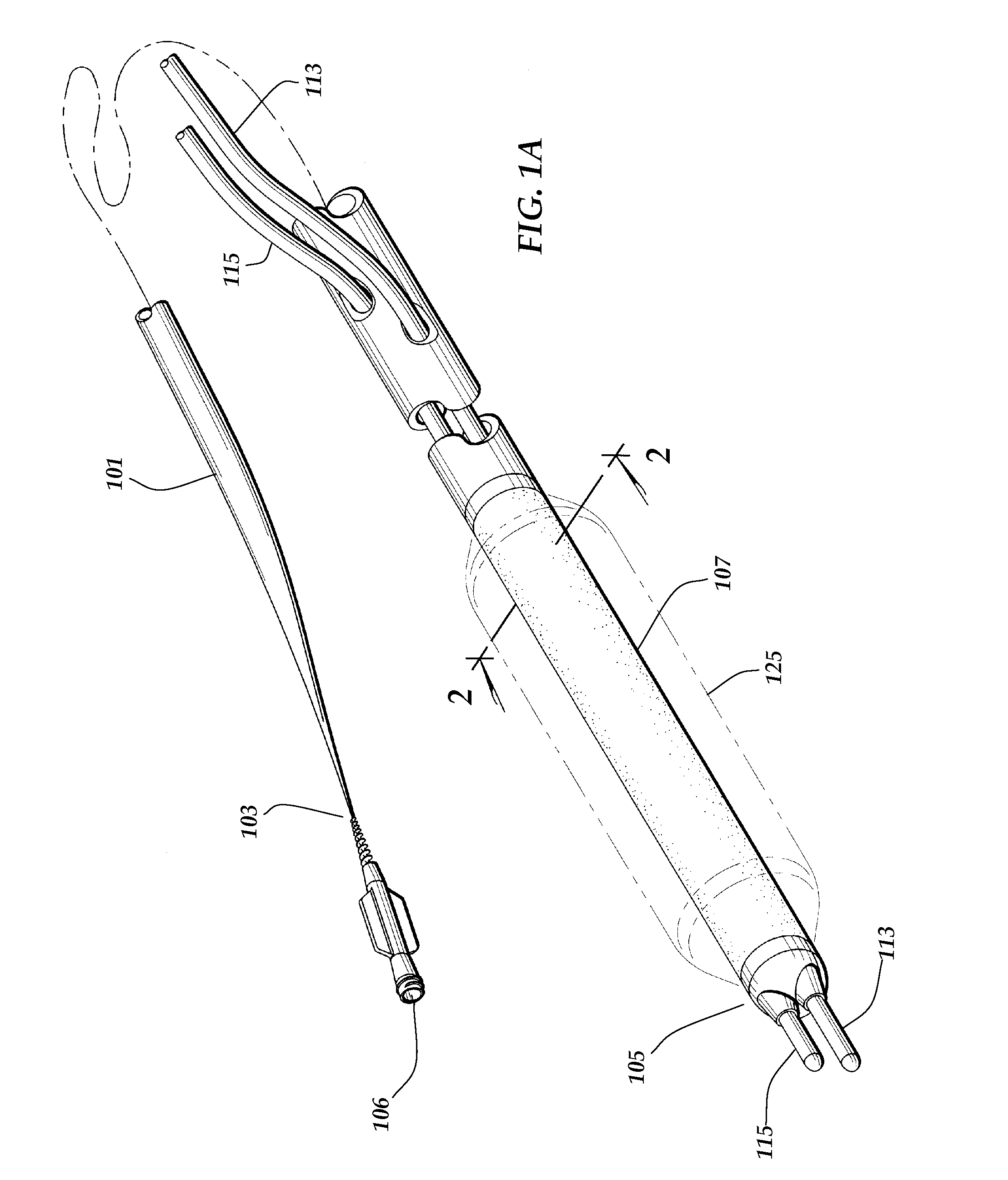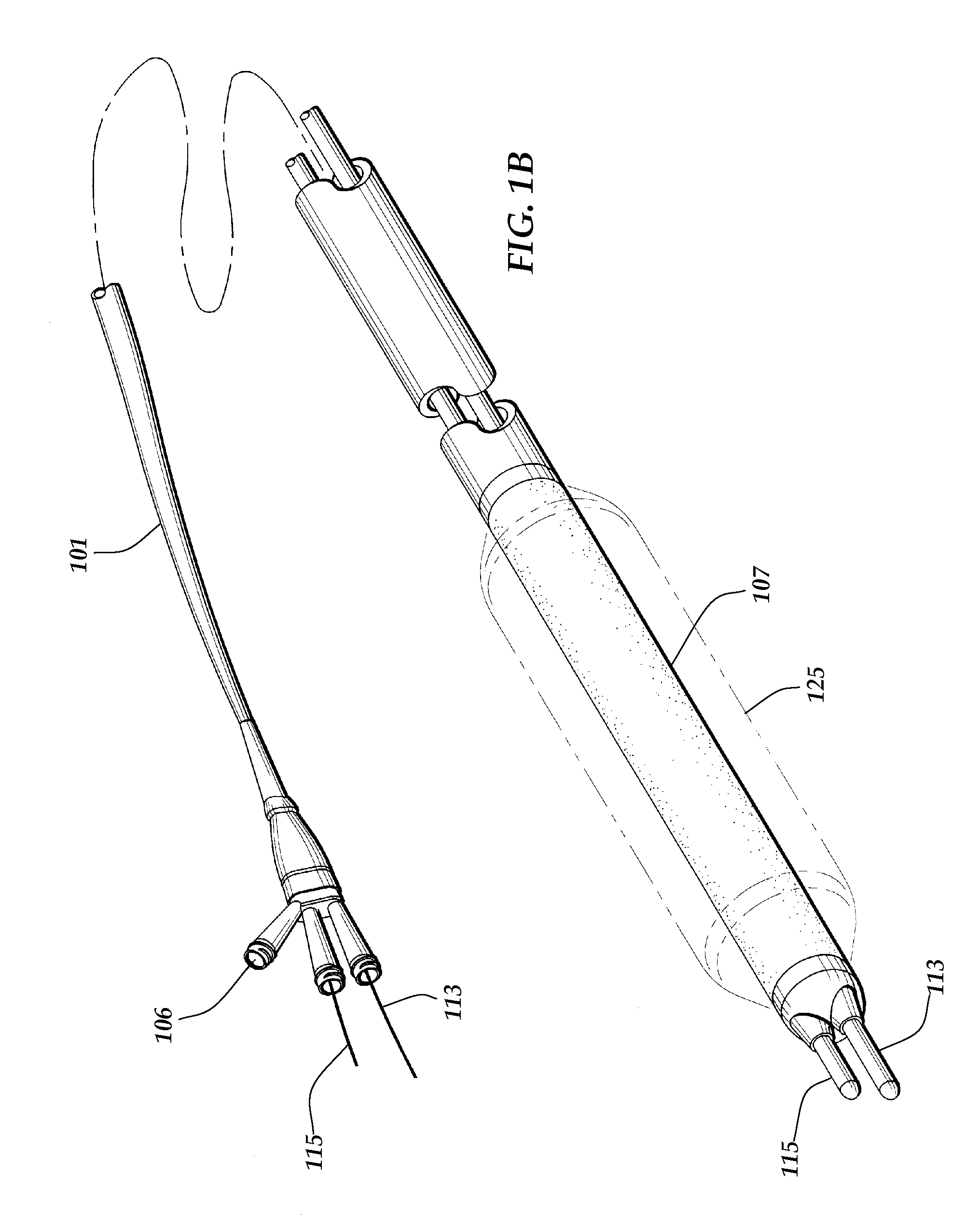Apparatus and method for treatment of bifurcation lesions
a bifurcation and apparatus technology, applied in multi-lumen catheters, blood vessels, surgery, etc., can solve the problems of many limitations of the use of a single tip port through which a single guide wire is threaded, the risk of side branches being occluded or lost during the procedure, and the physician is at risk of losing placement or occluding side branches during the procedure, so as to improve the degree of physician control over the procedure, improve the long-term results level a bifurcation lesions and treatment, applied in the field of bifurcation lesions and apparatus and treatment, which is applied in the field of application, the effect of bifurcation lesions and the use of single guide wires, the effect of the patient's long-term results
- Summary
- Abstract
- Description
- Claims
- Application Information
AI Technical Summary
Benefits of technology
Problems solved by technology
Method used
Image
Examples
Embodiment Construction
[0076]The catheter 101 may have various embodiments. As shown by FIG. 1A, one apparatus may comprise a catheter 101 having a guide wire 113 and a second guide wire 115 located at a very short distal end 105 immediately distal to an expandable member 107. The catheter has as well a proximal end 103, and such proximal end 103 is located closest to the physician performing the procedure. The catheter 101 may have an expandable member 107, typically a plastic balloon of various formulations, very near the distal end 105, and at the distal-most region of the catheter 101, there is a distal end 117 through which guide wire 113 and second guide wire 115 extend. The catheter 101 may preferably also have an expandable wire stent 109 (not shown in this figure) surrounding the expandable member 107. The expandable member 107 is actuated, or inflated, to a predetermined diameter, shown as the expandable member inflated diameter 125. The means for inflation to the expandable member inflated diam...
PUM
 Login to View More
Login to View More Abstract
Description
Claims
Application Information
 Login to View More
Login to View More - R&D
- Intellectual Property
- Life Sciences
- Materials
- Tech Scout
- Unparalleled Data Quality
- Higher Quality Content
- 60% Fewer Hallucinations
Browse by: Latest US Patents, China's latest patents, Technical Efficacy Thesaurus, Application Domain, Technology Topic, Popular Technical Reports.
© 2025 PatSnap. All rights reserved.Legal|Privacy policy|Modern Slavery Act Transparency Statement|Sitemap|About US| Contact US: help@patsnap.com



